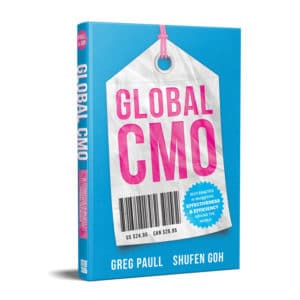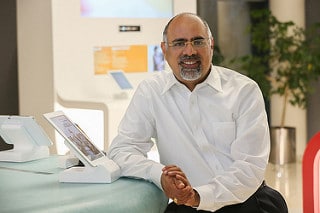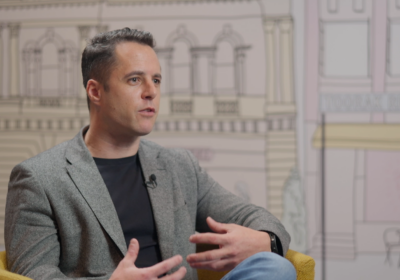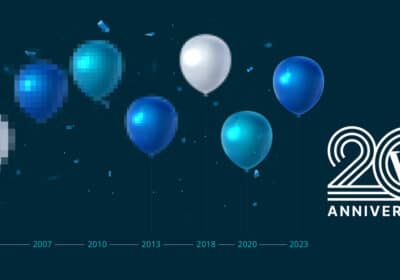An excerpt from Global CMO: Best Practice in Marketing Effectiveness & Efficiency Around the World (Mascot Books, 2018) by Greg Paull and Shufen Goh.
Even amongst all the change and uncertainty in the client-agency relationship space, there are many global players who are getting it right. The CMOs that participated in this book are putting best practices into place within their own organizations in both their day-to-day interactions with their agency partners, as well as their long-term strategies.
Look to New Models
Successful global marketers like P&G, Coca-Cola, and Unilever share one thing in common: they continue to evolve. They continue to keep their client-agency marriages fresh. Whether it’s outcome-based compensation, IMC innovation, or the brand agency leader model, the best brands trust their lead agency to manage others and drive business, with some resulting in very long relationships. For example, Procter & Gamble and Grey, Publicis, Saatchi, and Leo Burnett have more than 50 years together.

“We take a holistic approach to how we develop our 360 activations because the consumer journey has changed. It’s not linear anymore. It’s essential that we keep all our agencies team-oriented and acting as one well-informed, integrated team. When we conduct a 360 activation, we’re doing something in social that’s connected to what we’re doing in PR, that’s connected to what we’re doing in shopper, and with our overall creative strategy.”
While this approach is not new in the industry, it is new to GSK over the past few years and Agnew says it has completely transformed how GSK works with its agency partners.
There is no silver bullet for finding the right agency model. It comes along with trying new things to see what works and what doesn’t. The answer will be different for every CMO, and even successful agency models will still have challenges for both parties.
“We have a unique agency model that is very good for us, but it also poses challenges,” says Mukul Deoras of Colgate-Palmolive. “It is good because there are no conflicting multiple agency P&L’s distracting us, there is single-point brand knowledge, ownership and accountability. We don’t need to align 20 different teams. We have one set of people and everything is aligned with that one set, and that works for us. But because of our model, we have to constantly focus on accessing the best talent from the holding company in a far more flexible manner.”
Face Time Matters
Whether it’s through the use of technology or through physical presence, the best global relationships are not conducted solely through email and PowerPoint. Getting people together can make all the difference in the world.

In the best global relationships, both sides spend time to become immersed in the other. For an agency, this could be joining the sales team for a supermarket run, or it could mean working in the store, or even just becoming an active consumer of the client’s products. For a client, this also needs to happen: attending the agency’s office to listen to work, understanding their new developments, and becoming an advocate for them. The result will be a stronger foundation.
For Axel Schwan of Burger King, the agency relationship is much more than a purely transactional one. “The moment you bring on an agency partner from the outside, you want to make sure you treat them like they are on the inside, because they are,” he says.

Take Digital Seriously
Digital relationships can be a minefield of challenges. Too many marketers hire their digital agencies by the yard, not by the year. So digital agencies, for the most part, usually don’t see the need to invest in strategic planning or analytics, since neither side knows how long the relationship will last. Everything is so new, so everything tends to be more short term.
Juliana Chugg of Mattel has played an active role in pushing their current agency partners to embrace digital. She says: “We really challenge our partners in the agency to not think TV, but to think digital first. To think about narrative and storytelling. To think about purpose and things that matter to consumers in terms of relevance. It’s been a real shift in moving away from traditional methods of communication to having a digital first mindset. Digital has become so synonymous with how we operate that it’s like the air that we breathe.”
Benchmark And Evaluate
Marketers and agencies should be using external measures, whether it’s tracking research, media audits, 360-degree performance evaluations, or other measures to benchmark where they are in an ever-changing marketplace. It doesn’t have to just be through a pitch.
In R3’s consulting experience, we have seen one client that audits their agency every year—and seven years later, there’s still been no pitch. While the relationship is not totally perfect, there’s a lot of continuity and consistency.
Johnson & Johnson is one marketing organization that does evaluations better than just about anyone else, actively asking agencies for feedback on how they can become a better client. In the words of Mastercard CMO Raja Rajamannar, “Problems happen all the time…but we solve them with a lot of openness, transparency and collaboration.”
This mindset is key to a successful long- term client-agency relationship. There will always be problems that need solving and pain points along the way, but ensuring that each stakeholder is getting the most that they can from the relationship, there needs to be a framework put in place to measure success.





Join the conversation